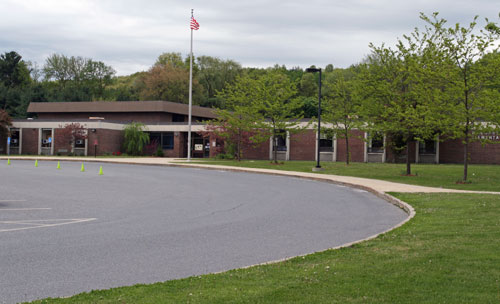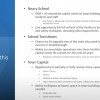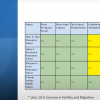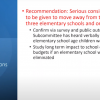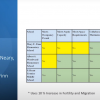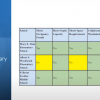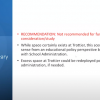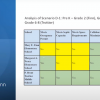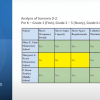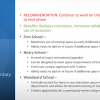Above: The Town is taking more steps towards investing in studying renovating or rebuilding Neary School. (image from Neary’s website)
Last week, the School Committee greenlit pursuing a Feasibility Study to examine a project to renovate or rebuild Neary School. The study and related work would be overseen by a Neary School Building Committee to be appointed by the Board of Selectmen. Selectmen are scheduled to discuss the recommended charge at their meeting this Tuesday (February 15th).
The first big challenge of the School Building Committee would be convincing upcoming Annual Town Meeting voters to pay for the Feasibility Study. The new committee will be expected to create an FAQ to answer parents and voters questions. But many of the likely questions can’t be answered without the Study. That includes the estimated cost of a project and whether/where students would have to be temporarily relocated while a project is in process.
At last Thursday’s meeting, the School Research Subcommittee presented their findings to the School Committee. It included their analysis that doing nothing this year would come with a high cost.
A study of the condition of the Neary building determined the Town will have to spend over $4M within five years on maintenance/repairs (including a roof and electrical work) to keep the building safe. The building itself is only valued at $8M.
According to Subcommittee Chair Jason Malinowski, investing in repairs of over half the building’s value would trigger a requirement for the Town to come up to building code on many other items, including ADA compliance. That would then lead to a much more expensive project. It’s one reason that a renovation project can sometimes be as or more expensive than new construction.
Depending on how the Town proceeds (and support of voters), the Subcommittee estimated completion of the Neary project by early 2026 – early 2028.
The schools’ capital needs are just one of the reasons the Town and School administration are interested in a project. NSBORO administration has stated that parents often complain of too many transitions between schools for young students. And the Town is looking at the most efficient way to handle all of the Town’s aging buildings and the space needs requirements of schools, Town Departments, the Senior Center, Recreation, and the Library.
While Subcommittee members acknowledged the project will cost voters, member Kathy Cook (of Advisory) stated that it might not be a “net” cost. In FY23, the debt from past building projects will “roll” off the books. That means that adding the annual cost for taxpayer to fund a bond for the project may not result in a direct year over year increase.
The subcommittee ran through the different scenarios for keeping open or consolidating schools. The scenario that they recommended was to conduct a Feasibility Study to determine the costs of rehabbing or rebuilding Neary to house grades 2-5. The results of that study would hopefully be used to bring a proposal to Town Meeting voters for building that project and decommissioning Woodward School in order to convert its use to a municipal building and community center.
The final charge and composition of the committee is the responsibility of selectmen. The School Committee approved a draft created by Superintendent Gregory Martineau that he’ll present to selectmen. He explained that meets requirements of the Mass School Building Authority. That was in case the Town is invited into MSBA’s Feasibility Study process.
Southborough’s project is one of 11 that the MSBA is considering for this year’s round. A decision is expected by March 3rd. If Southborough is accepted, the MSBA would reimburse a portion of the Town’s cost. If rejected, the Town would have to decide whether to fully foot the bill or wait to apply next year.
It appeared that weighing the potential costs and benefits of proceeding through a slower MSBA process is something the new committee would be expected to consider. But it isn’t specified in their draft charge. The charge does however include language about updating the charge as the committee’s work proceeds. (You can read the draft charge here.)
In a previous post, I wrote about the subcommittee’s decision to base space requirements on a projection of a 14% enrollment increase by 2030. In last week’s presentation, the subcommittee explained their decision about which enrollment projections to use.
Based on the first consultant’s large swing in numbers following questions by the School Committee and administration, they didn’t have enough confidence to rely on those figures. They sought a second opinion from an expert in demographics, RLS.
Subcommittee and School Committee Member Keturah Martin explained their confidence that RLS did a more detailed analysis of Southborough, including its migration trends. She also noted that there was no way in the study to account for potential new housing projects. That’s part of the reason the subcommittee added in a “cushion” by using RLS data based on 10% higher fertility and migration rates.
As for some public comments from people who prefer Woodward to Neary, Martin assured that the project wouldn’t be moving Woodward students into Neary as it currently exists. It would be after it was improved to be a good educational space for students.
Reasons the subcommittee didn’t prefer decommissioning Neary included the lack of usable land around Woodward to accommodate expanding the school to fit more students in the future. The administration also listed logistics issues of maintaining three separate campuses as a negative.*
Below are some of the key slides from the presentation. (You can watch the full video here.)
*I don’t understand why they included busing as an example on the slide for why a third campus isn’t ideal. The current bus tiers combine Finn, Woodward, and Neary on one bus and Trottier and Algonquin on another. Finn and Woodward appear to be a more logical pair for bus routes than Finn and Neary.

